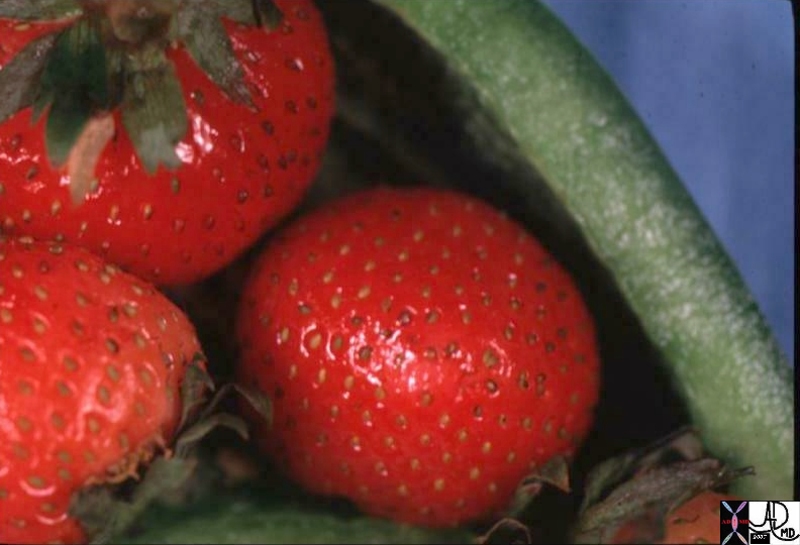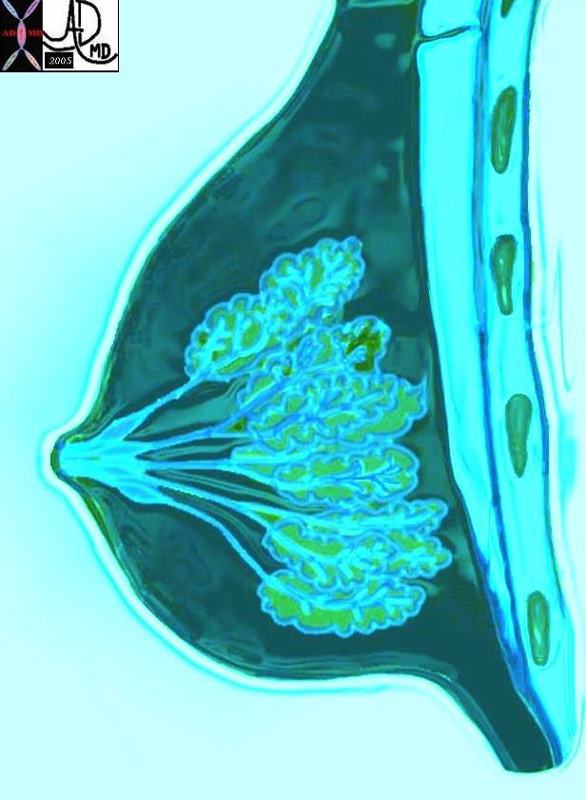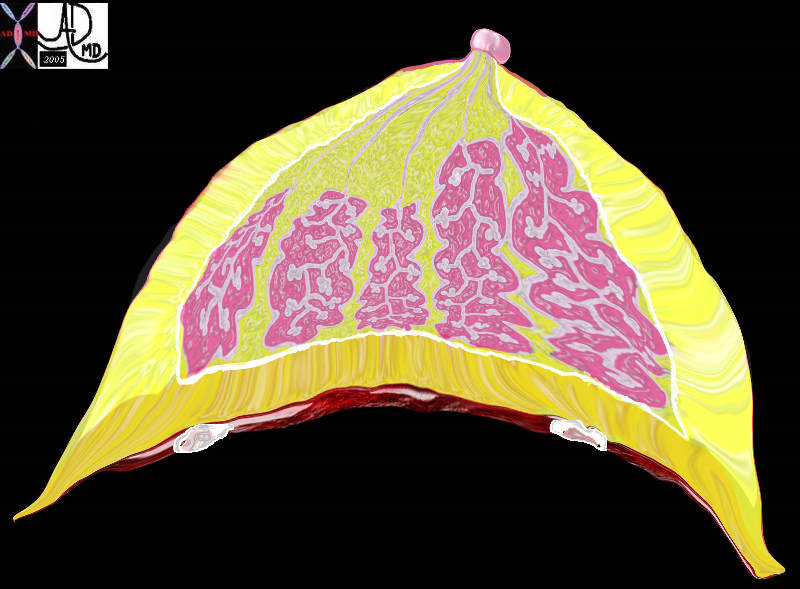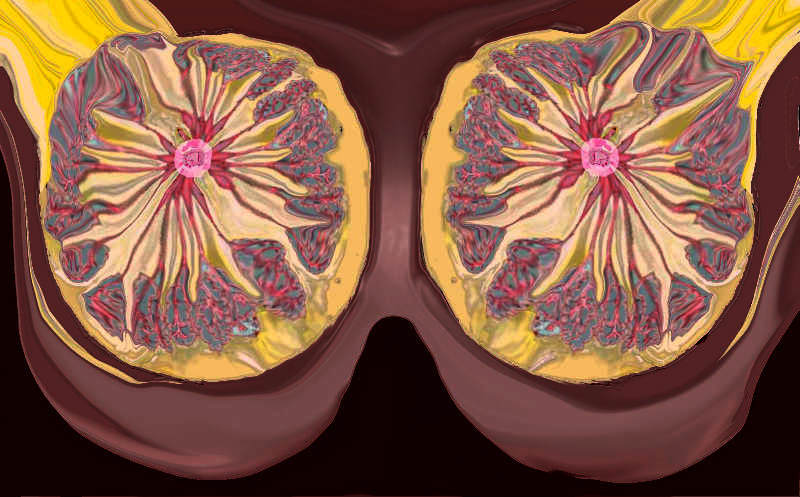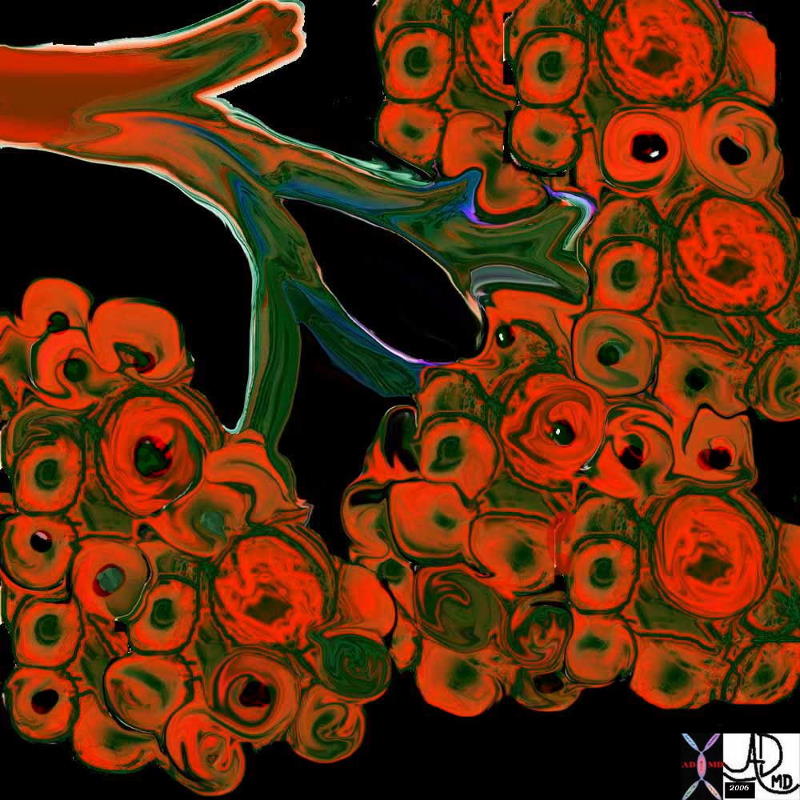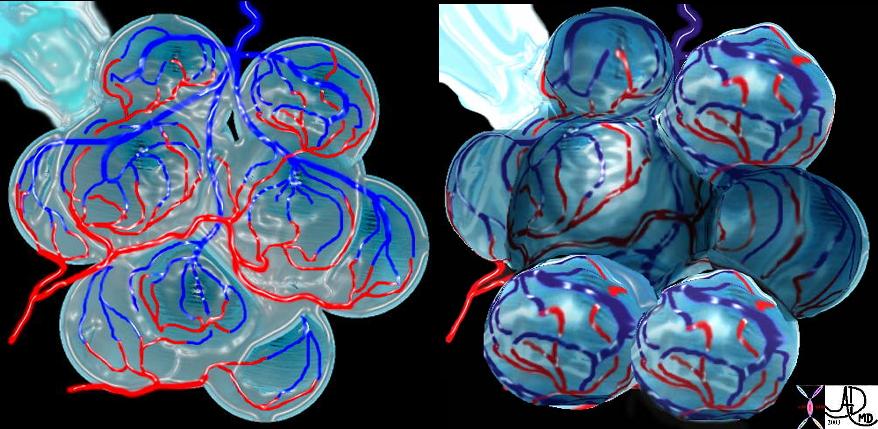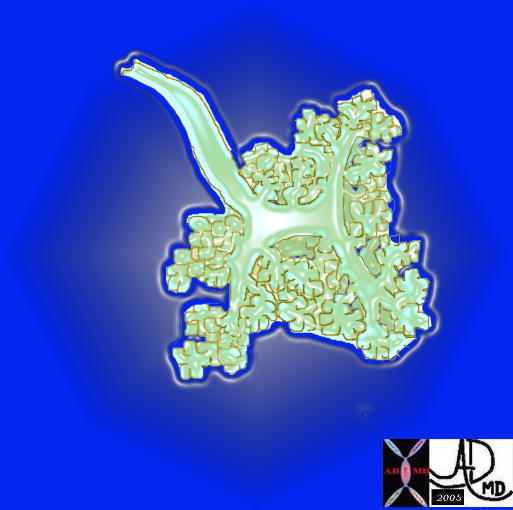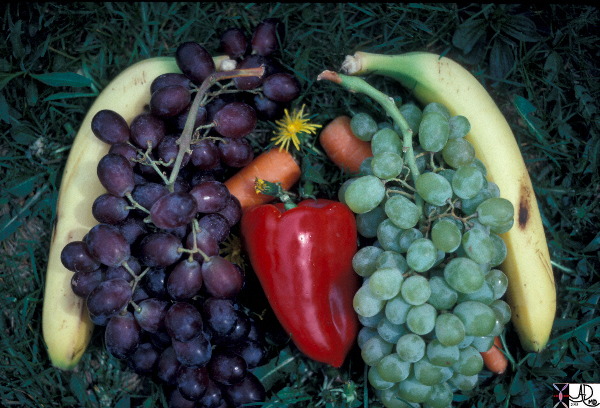Food, Body, Biology, and Medicine
Copyright 2008
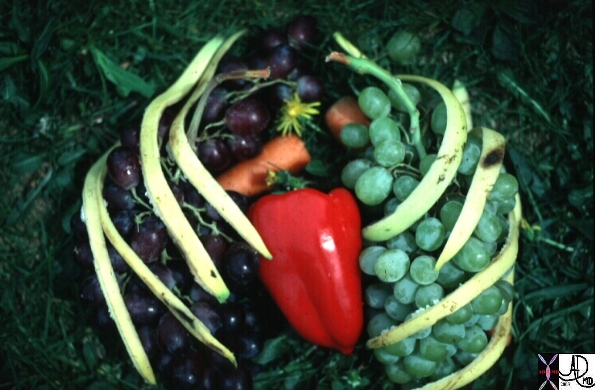
Anatomy Lesson |
|
This “Chest of Fruit” with the red pepper for the heart and clusters of grape-like oversized alveoli speaks for itself – The image provides a brief respite from the serious depths of our discussion about anatomy lesson on the chest. Courtesy Ashley Davidoff MD 15481 Courtesy Ashley Davidoff MD. Davidoff art
|
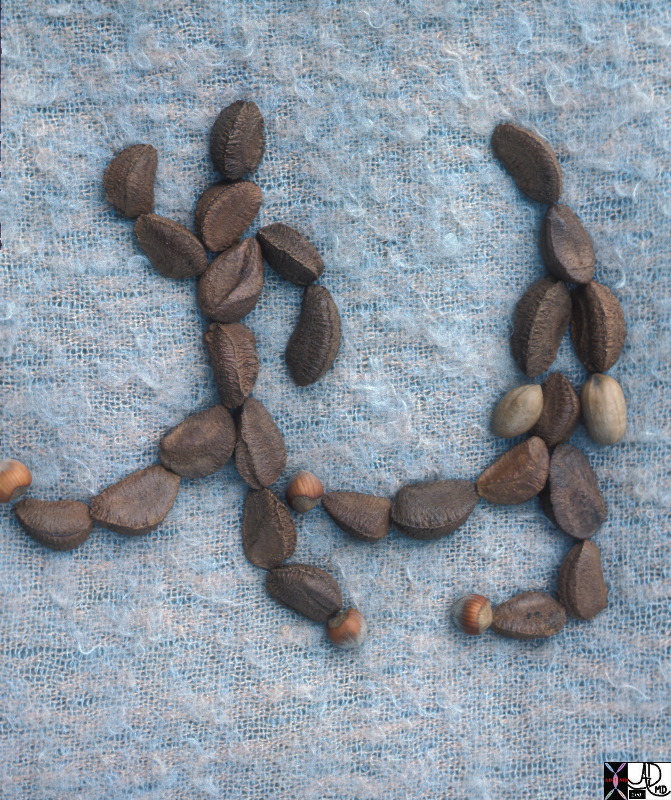
Nuts About Dancing |
| 04359p.800 Nuts about Dancing Dance Davidoff Art |

Adrenal Dessert |
|
The adrenal gland is made of the adrenal cortex and medulla. The cortex has three layers each responsible for a different hormone. the outer layer is responsible for aldosterone is called the zona glomerulosa (yellow), the middle layer consists of longitudinally oriented glands and is called zona fasciculata, while the last layer called the retcularis (deep orange) is responsible for the production of androgens 25690c adrenal gland adrenal dessert food body biology and medicine cortex medulla Davidoff art Courtesy Ashley Davidoff MD copyright 2008 |
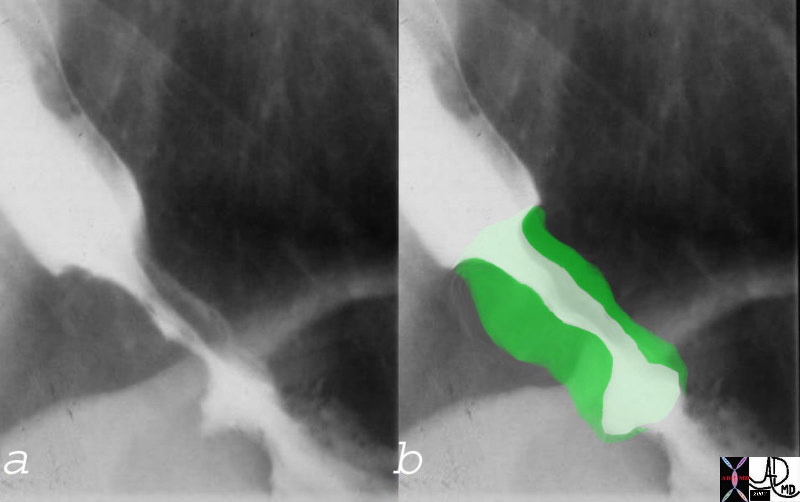 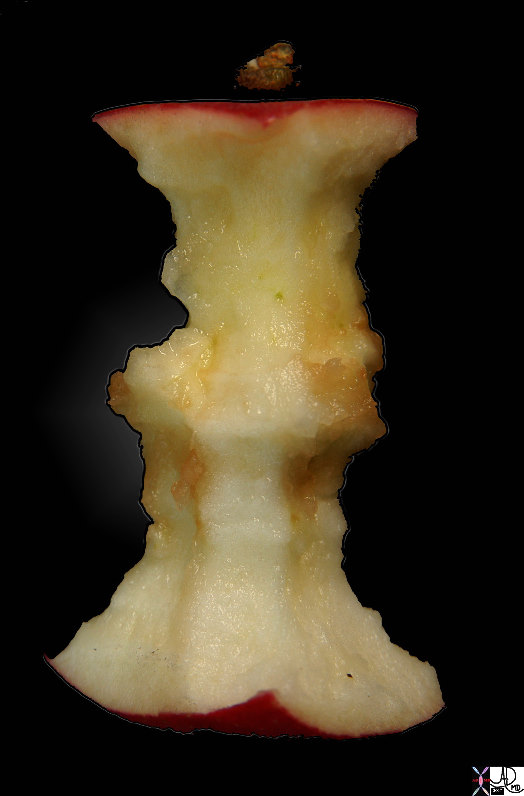
Apple Core Lesion |
|
00619c03 esophagus fx narrowed stenosis apple core no upstream dilatation GE junction gastroesophageal junction stomach dx poorly differentiated adenocarcinoma UGI barium swallow Courtesy Ashley Davidoff MD 85394pb01.800 fruit apple applecore radiological sign malignancy submucosal invasion circumferential disease ulceration heaped up edges Davidoff photography Davidoff MD
|
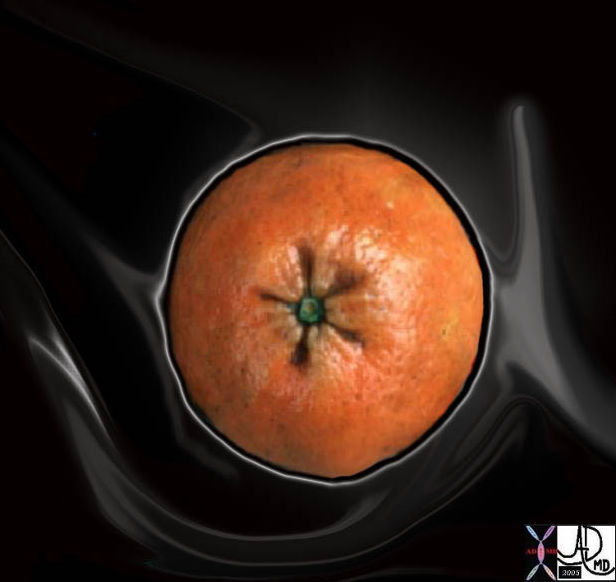
Peau D’Orange |
|
Peau d’orange is the French term used, and adopted into the English language to describe the skin of the breast when it becomes dimpled usually due to lymphatic edema and resembles the skin of an orange. This entity is seen in breast cancer and common in inflammatory breast cancer. 13575b02 breast sign carcinoma cancer skin involvement Coopers ligament dimpling peau d’orange art Courtesy Ashley Davidoff MD Davidoff art |
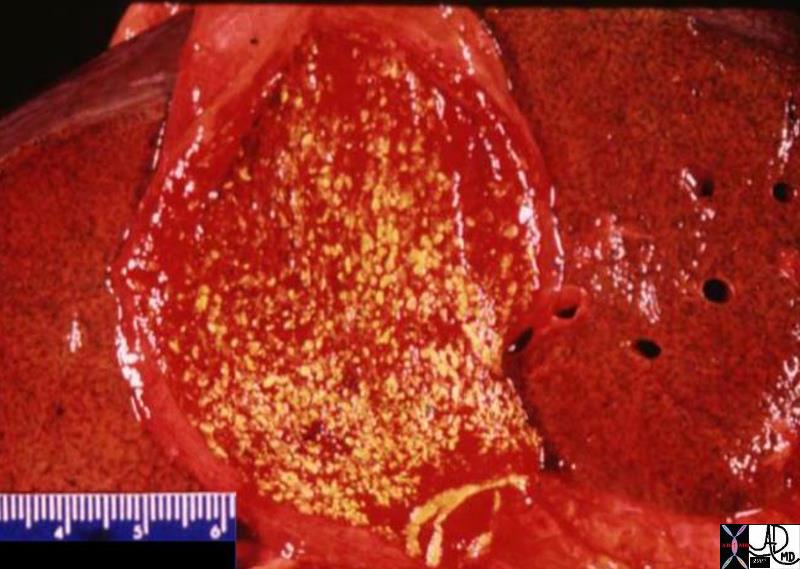 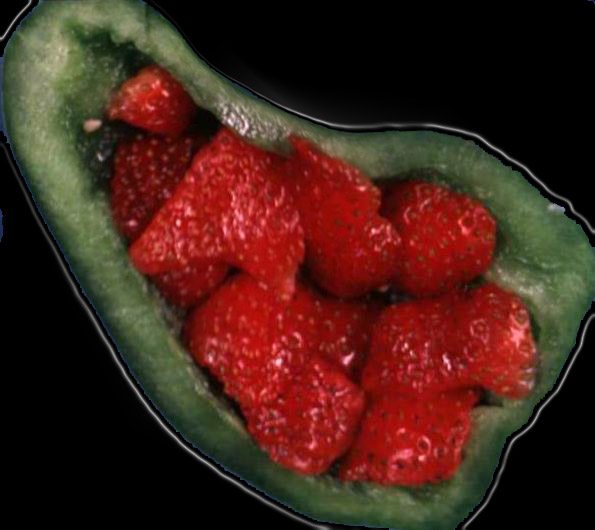
Strawberry Gallbladder |
| Strawberry gallbladder is the term used to describe a condition in the gallbladder called cholesterolosis of the gallbladder where yellow cholesterol deposits in the submucosa of the gallbladder are seen in the background of a reddened and inflammed wall resembling the appearance of a strawberry.
04777.800 04776b02 04761.800 gallbladder strawberry gallbladder greenpepper yellow cholesterolosis hyperplastic cholecystoses cholecytosis Davidoff Art
|
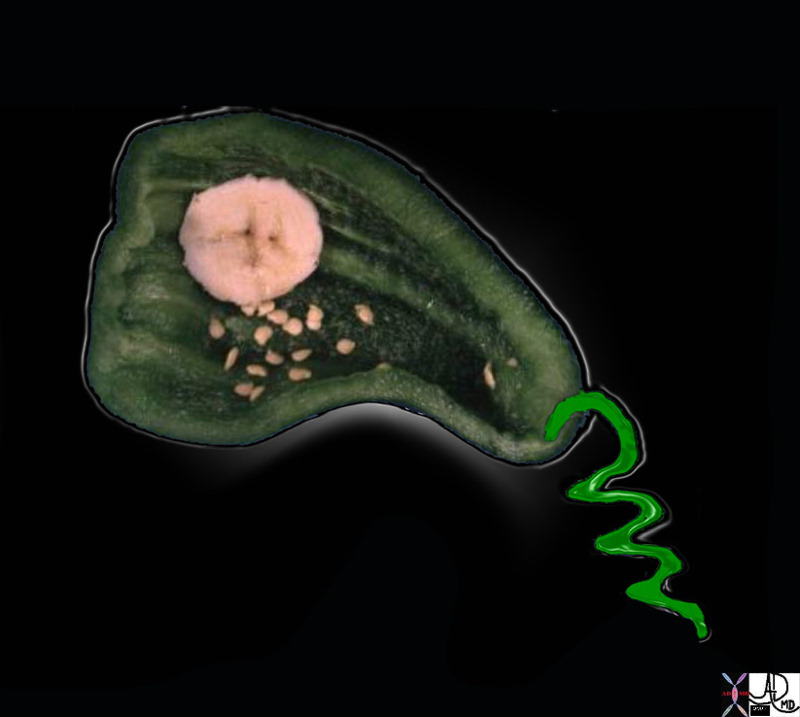
Gallstones in the Gallbladder |
|
The gallbladder which is the greenpepper contains stones made of native seeds of the greenpepper and a single slice of a banana which represents a large cholesterol stone. 00404b01.800 gallbladder gallstones cystic duct cholelithiasis greenpepper banana Davidoff Art Davidoff MD |
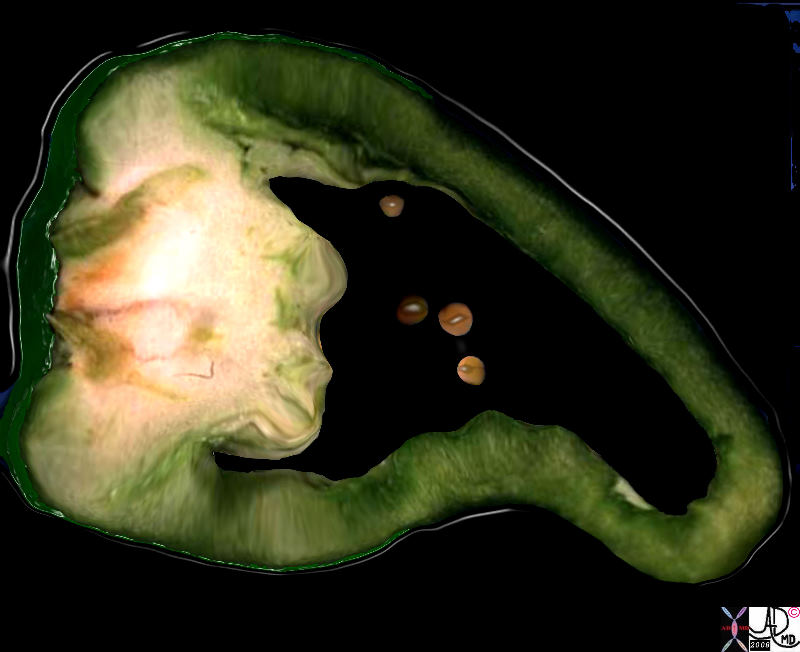
Gallbladder Cancer and GallStones |
|
This greenpepper was cut through at its bulky and fleshy white base where the mound of tissue was reminiscent of a malignant mass. The seeds of the greenpepper serve as gallstones which are almost always associated with malignancies of the gallbladder 11528b.8 gallbladder food in the body green pepper cancer carcinoma gall stones cholelithiasis Davidoff art Davidoff photography copyright
|
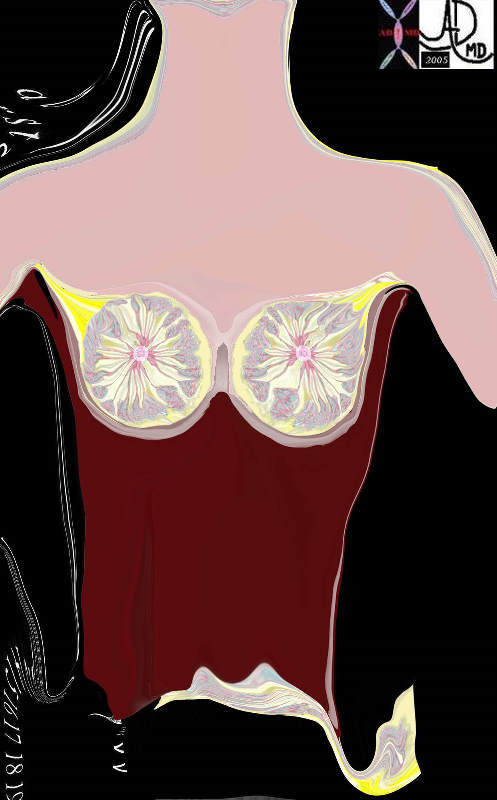
Skin Deep Grapefruit Structure and the Breasts |
|
Beyond the skin the breasts consist of glandsand ducts that are interdgitated with adipose tissue. The glandular substance consists of 15 to 20 lobes each is an independent gland subtended by its own ductal system Each lobe is divided into lobules. The lobe is associated with a duct. The artistic rendering “skin deep” reflects the histology of the breast which is seen in sagittal section (breast in blue) axial section and finally in coronal section. In the final image, the ducts are seen in red coursing to the nipples with the pink and teal glandular structure is seen peripherally. The fat is in yellow 42657b15 grapefruit breast red nipple food in the body food biology medicine and body fruit Davidoff art Davidoff photography
|

The Berries grapes Acini and Alveoli of the Body |
|
The grape like structure (aka acinar and alveolar structure is seen in many structures of the body including alveoli of the lungs and acini of many glands. Snow covered red berries – the contrats between the cherry red and the snow white make them look delicious. Courtesy Ashley Davidoff MD. 02160p 32645a10.800 32164b 42650 02066p code accessory interesting |
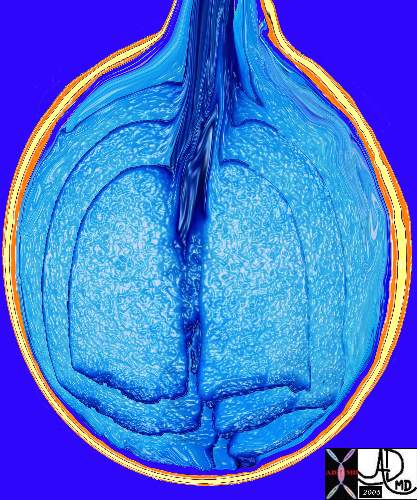
The grape of the Lung |
| The alveolus is the single sac that is the unit in the lung where the gas exchange takes place. Alveolus means small pit, hollowed out structure, or sac and is used interchangeably with acinus which means small grape. The alveoli in groups have been describe as a bunch of grappes and each alveolus is represented as a grape. In this drawing the lungs and capsule are reflected usung the single unit, acinus or alveoli as the looking glass.
The two layers of pleura (orange) are held together by a thin layer of pleural fluid (yellow) by cohesive and adhesive forces. The visceral pleura is connected to the lung while the parietal pleura is attached to the chest wall. The pleura and fluid as a unit bind the chest wall to the lungs. The cohesion and adhesion that results keeps the outer chest cage of bone and muscle in intimate contact with the lungs, being pulled and pushed together in the harmonious dance of respiratory movement. Courtesy Ashley Davidoff MD 42540b06 Davidoff art
|
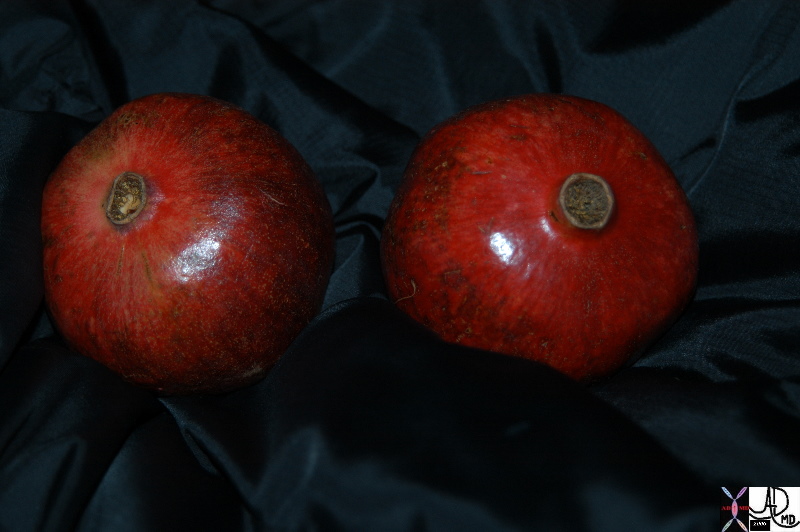
Pomegranates and the Breasts |
|
The shape and the nipple like structures at the base of the pomegranates are remminiscent of breast structure. 86226.8 pomegranates breast red nipple food in the body food biology medicine and body fruit Davidoff art Davidoff photography
|
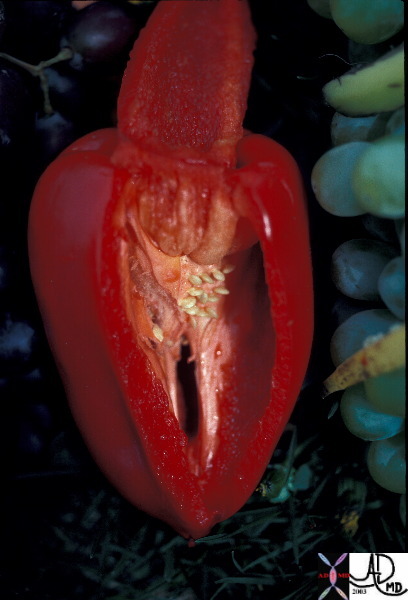
Female Introitus |
| The red pepper is carefully opened and an entry into its secret chamber is revealed yet covered by two fleshy columns of curtain and a few spilled seed. There is a remarkable resemblance to the female labia vagina and introitus. Courtesy Ashley Davidoff MD. 02172p code accessory interesting Davidoff art |
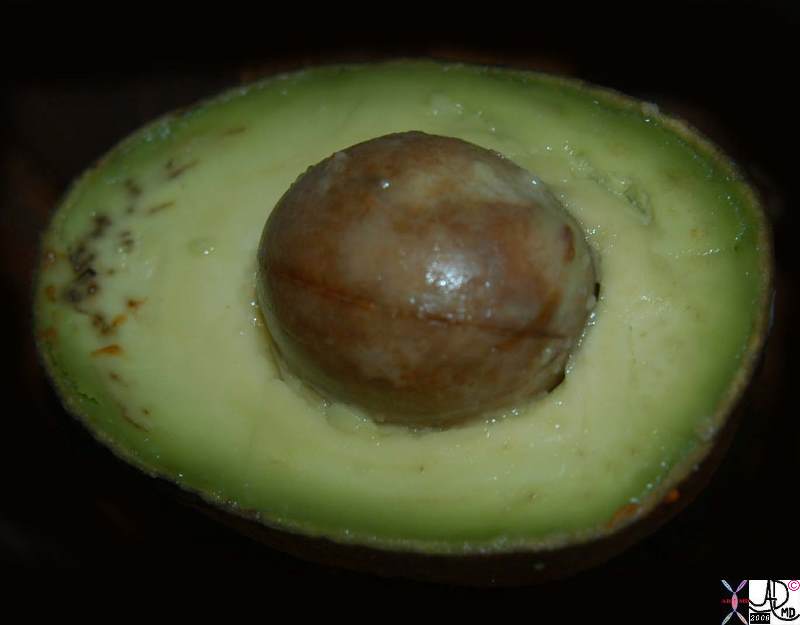
Avocado and the Uterus |
| 87836pb01.8s uterus food in the body green shape cholesterol Avocados, Eggplant and Pears relate to structure (similar shape) function of the womb and cervix of the female – one avocado a week, it balances hormones, prevents cervical cancers. It takes exactly nine (9) months to grow an avocado from blossom to ripened fruit. There are over 14,000 photolytic chemical constituents of nutrition in each one of these foods (modern science has only studied and named about 141 of them). Davidoff Photography Copyright 2008 |
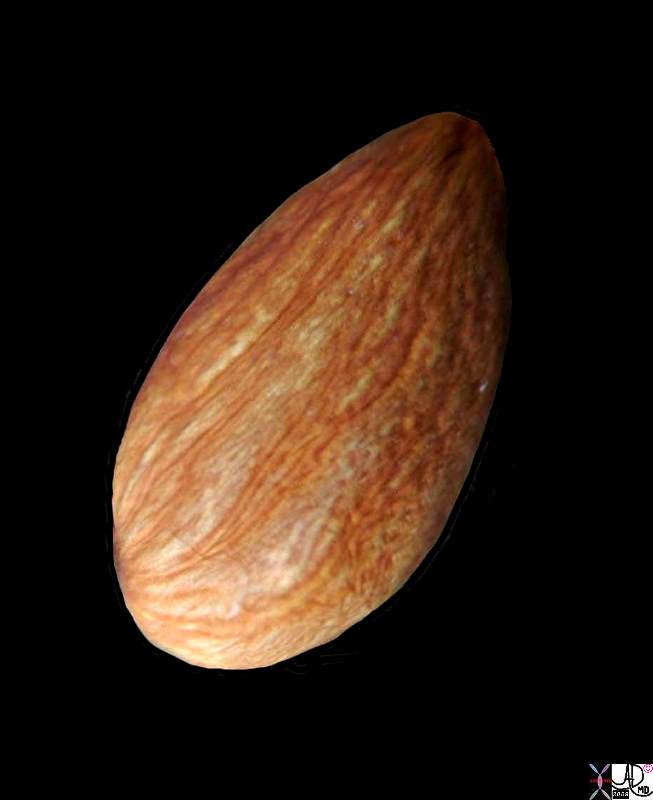
The Almond – Shape of the Ovary and the Amygdala |
| 82470.81s fruit nut food food in the body shape almond ovary amygdala Davidoff photography copyright 2008 |
Reference
“God’s pharmacy”
“A friend sent this to me. It’s been said that God first separated the salt water from the fresh, made dry land, planted a garden, made animals and fish… all before making a human. He made and provided what we’d need before we were born. These are best & more powerful when eaten raw. We’re such slow learners… God left us a great clue as to what foods help what part of our body! “
Barbara Lebron – barbara.lebron@philips.com 7/23/08
 A sliced Carrot looks like the human eye. The pupil, iris and radiating lines look just like the human eye… and YES, science now shows carrots greatly enhance blood flow to and function of the eyes.
A sliced Carrot looks like the human eye. The pupil, iris and radiating lines look just like the human eye… and YES, science now shows carrots greatly enhance blood flow to and function of the eyes.
 A Tomato has four chambers and is red. The heart has four chambers and is red. All of the research shows tomatoes are loaded with lycopine and are indeed pure heart and blood food.
A Tomato has four chambers and is red. The heart has four chambers and is red. All of the research shows tomatoes are loaded with lycopine and are indeed pure heart and blood food.
 Grapes hang in a cluster that has the shape of the heart. Each grape looks like a blood cell and all of the research today shows grapes are also profound heart and blood vitalizing food.
Grapes hang in a cluster that has the shape of the heart. Each grape looks like a blood cell and all of the research today shows grapes are also profound heart and blood vitalizing food.
 A Walnut looks like a little brain, a left and right hemisphere, upper cerebrums and lower cerebellums. Even the wrinkles or folds on the nut are just like the neo-cortex. We now know walnuts help develop more than three (3) dozen neuron-transmitters for brain function.
A Walnut looks like a little brain, a left and right hemisphere, upper cerebrums and lower cerebellums. Even the wrinkles or folds on the nut are just like the neo-cortex. We now know walnuts help develop more than three (3) dozen neuron-transmitters for brain function.
 Kidney Beans actually heal and help maintain kidney function and yes, they look exactly like the human kidneys.
Kidney Beans actually heal and help maintain kidney function and yes, they look exactly like the human kidneys.
 Celery, Bok Choy, Rhubarb and many more look just like bones. These foods specifically target bone strength. Bones are 23% sodium and these foods are 23% sodium. If you don’t have enough sodium in your diet, the body pulls it from the bones, thus making them weak. These foods replenish the skeletal needs of the body.
Celery, Bok Choy, Rhubarb and many more look just like bones. These foods specifically target bone strength. Bones are 23% sodium and these foods are 23% sodium. If you don’t have enough sodium in your diet, the body pulls it from the bones, thus making them weak. These foods replenish the skeletal needs of the body.
 Avocados, Eggplant and Pears target the health and function of the womb and cervix of the female – they look just like these organs. Today’s research shows that when a woman eats one avocado a week, it balances hormones, sheds unwanted birth weight, and prevents cervical cancers. And how profound is this? It takes exactly nine (9) months to grow an avocado from blossom to ripened fruit. There are over 14,000 photolytic chemical constituents of nutrition in each one of these foods (modern science has only studied and named about 141 of them).
Avocados, Eggplant and Pears target the health and function of the womb and cervix of the female – they look just like these organs. Today’s research shows that when a woman eats one avocado a week, it balances hormones, sheds unwanted birth weight, and prevents cervical cancers. And how profound is this? It takes exactly nine (9) months to grow an avocado from blossom to ripened fruit. There are over 14,000 photolytic chemical constituents of nutrition in each one of these foods (modern science has only studied and named about 141 of them).
 Figs are full of seeds and hang in twos when they grow. Figs increase the mobility of male sperm and increase the numbers of sperm as well to overcome male sterility.
Figs are full of seeds and hang in twos when they grow. Figs increase the mobility of male sperm and increase the numbers of sperm as well to overcome male sterility.
 Sweet Potatoes look like the pancreas and actually balance the glycemic index of diabetics.
Sweet Potatoes look like the pancreas and actually balance the glycemic index of diabetics.
 Olives assist the health and function of the ovaries
Olives assist the health and function of the ovaries
 Oranges , Grapefruits, and other Citrus fruits look just like the mammary glands of the female and actually assist the health of the breasts and the movement of lymph in and out of the breasts.
Oranges , Grapefruits, and other Citrus fruits look just like the mammary glands of the female and actually assist the health of the breasts and the movement of lymph in and out of the breasts.
 Onions look like the body’s cells. Today’s research shows onions help clear waste materials from all of the body cells. They even produce tears which wash the epithelial layers of the eyes. A working companion, Garlic, also helps eliminate waste materials and dangerous free radicals from the body.
Onions look like the body’s cells. Today’s research shows onions help clear waste materials from all of the body cells. They even produce tears which wash the epithelial layers of the eyes. A working companion, Garlic, also helps eliminate waste materials and dangerous free radicals from the body.
